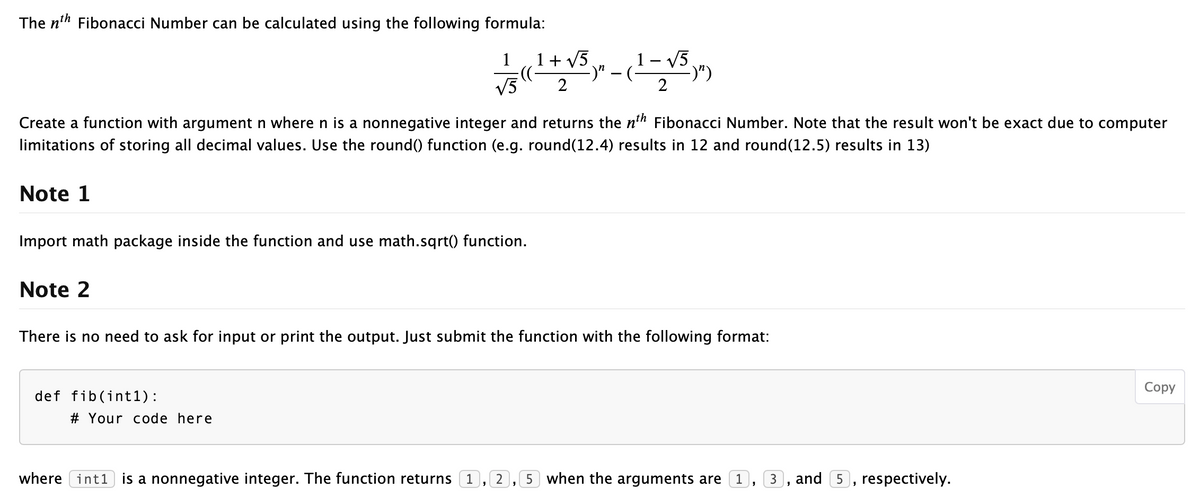The n'h Fibonacci Number can be calculated using the following formula: و « 1+ v5 V5 1- V5 -)") 2 1 2 Create a function with argument n where n is a nonnegative integer and returns the n'h Fibonacci Number. Note that the result won't be exact due to computer limitations of storing all decimal values. Use the round() function (e.g. round(12.4) results in 12 and round(12.5) results in 13) Note 1 Import math package inside the function and use math.sqrt() function. Note 2 There is no need to ask for input or print the output. Just submit the function with the following format: Сopy def fib(intl1): # Your code here where int1 is a nonnegative integer. The function returns 1,2,5 when the arguments are 1, 3, and 5, respectively.
Control structures
Control structures are block of statements that analyze the value of variables and determine the flow of execution based on those values. When a program is running, the CPU executes the code line by line. After sometime, the program reaches the point where it has to make a decision on whether it has to go to another part of the code or repeat execution of certain part of the code. These results affect the flow of the program's code and these are called control structures.
Switch Statement
The switch statement is a key feature that is used by the programmers a lot in the world of programming and coding, as well as in information technology in general. The switch statement is a selection control mechanism that allows the variable value to change the order of the individual statements in the software execution via search.

Step by step
Solved in 4 steps with 2 images




